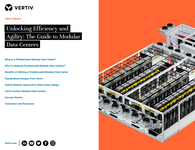The evolution of the supply chain crisis and the resulting increases in costs has been complex, with some issues emerging over many years. However, it is safe to say that the past couple of years has been the most challenging for anyone involved in construction, with a general reduction in the supply and the reliability of supply visible in our sectors.
This is now being further exacerbated by rising inflation and a global cost of living crisis in the making. Yet the demand for data cenere construction and development to support the continued drive for digitalization continues unabated and the industry is having to dig deep once again.
Despite challenges, growth continues
Perhaps unsurprisingly, in the latest Business Critical Solutions (BCS) Report which gathers insights from over 3,000 senior professionals across the UK and Europe, our construction sector respondents reported real concerns about the future, yet around 88 percent of our developers and investors expect to increase the amount of European technical data center area that they own or are prepared to fund in the next 12 months. This is despite stating that the past year was the most challenging ever for sourcing construction raw materials with concrete/cement, steel, cladding materials, and dry lining materials all proven to be more difficult to acquire, as surplus stocks have been used up and price inflation bites. A significant proportion of our respondents also reported difficulties in sourcing equipment components for the fit-out of their facilities. Again, there was a marked uplift in problems in the past year, across all areas of the M&E (mechanical and electcrical) functions, most notably around generator, battery and distribution infrastructure and air-cooling equipment.
This certainly resonates with the challenges facihng data center construction projects in the UK and Europe. So, what is the answer? In simple terms the situation is unlikely to change in the short to medium term (and it may even get worse) so any plans to defer or delay should be considered in that context. In the meantime, the industry is having to navigate these challenges and find the best way to mitigate the issues.
Our advice is to push forward, bite the bullet and work closely with partners to find a way.
Of course, anyone who operates in the construction industry is used to the need for forward planning but this has now been taken to a new level. For example, depending upon the project and the associated cost restraints, it's a good idea to place orders for future phases of any development now early. Even if the work is not planned for a while, booking factory slots well in advance for key elements can be a good idea. That helps the client get a secure supply and the supplier can benefit from increased visibility.
As with shortages in construction materials, difficulties sourcing fit- out equipment components have led to price inflation across the board. If we go back to our survey, more than double the number of respondents have cited experiencing these rises this year compared to last year. Indeed, in the case of security systems components, the number has increased nearly four-fold from around nine percent to 36 percent this year.
And it is not just the rise in costs – it is the speed of the rise too. This month we are seeing the price of key elements such as transformers guaranteed for only two weeks (it used to be four) and some material costs rising almost daily. This of course brings with it added pressure on our clients to sign off on costs and project stages quickly or risk paying more or even delaying works.
This is further complicated as in most cases there are several levels of sign off.
Communication is key
Collaboration and communication is the key to making this work and by understanding the client’s internal processes we can make sure that our project gateway aligns with their internal governance.
In many cases delaying a project is not feasible and future demand levels for data centers show no signs of slowing. Our advice to clients may be to procure early and don’t single source but go out to the wider market.
Also, assess the possibility of using alternative products that may be easier to get hold of – for example perhaps not using cladding. In some cases, it can be worth reviewing existing facilities to see if they can be upgraded or refurbished to provide a short to medium fix. In fact, we are seeing significant opportunities within older facilities with critical system upgrades and SPOF (single point of failure) removal.




